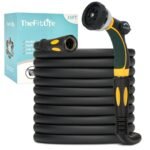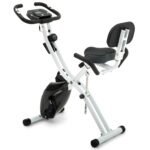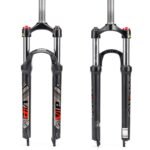Introduction On How To Cast A Fishing Rod
As the sun rises over the calm waters, there’s a sense of anticipation in the air. The gentle breeze whispers secrets of hidden treasures beneath the surface, and I can’t help but feel a surge of excitement.
Today, I’m going to teach you how to cast a fishing rod, so you too can experience the thrill of casting your worries aside and embracing the freedom of the open water.
Imagine yourself standing on the edge of a tranquil lake, surrounded by nature’s symphony. With each flick of your wrist, the line dances through the air, defying gravity for a brief moment before gracefully landing on its intended target.
Casting a fishing rod is more than just a technique; it’s an art that requires patience, precision, and a deep connection with the elements.
So, grab your rod, feel the weight of possibility in your hands, and let’s dive into the world of casting, where the pursuit of freedom begins.
Key Takeaways
- The choice of fishing rod material (fiberglass or graphite) depends on the user’s level of experience and desired sensitivity.
- Selecting the right fishing line (monofilament, fluorocarbon, or braided) is crucial and should be based on fishing conditions, target species, and personal preferences.
- Proper grip and stance are important for control and accuracy in casting, including placing the thumb on top of the rod, fingers wrapped around the handle, and maintaining a comfortable stance with feet shoulder-width apart.
- Loading the rod by creating tension in the line and executing a smooth and controlled forward motion, along with factors like timing, hand placement, rod flexibility, weight shift, and a fluid release, are vital for successful casting.
How To Cast A Fishing Rod
Casting a fishing rod is an essential skill in fishing. Here’s a step-by-step guide to help you cast a fishing rod:
- Grip the rod: Hold the fishing rod with your dominant hand. Place your thumb on top of the rod’s handle, and wrap your fingers around the handle below the rod’s reel seat. Your grip should be firm but not too tight, allowing for some flexibility and movement.
- Position yourself: Stand with your feet shoulder-width apart and face your target area where you want to cast the bait. Keep your body slightly sideways to have a better range of motion during the cast.
- Hold the line: With your free hand (non-dominant hand), hold the fishing line against the rod just above the reel. Use your index finger and a bit of your middle finger to keep the line in place.
- Prepare the cast: To load the rod for the cast, swing it back behind your shoulder. The motion should be smooth and controlled. The exact angle of the swing will depend on the type of cast you’re using, but for a basic overhead cast, bring the rod tip back until it is approximately pointing upwards at about a 45-degree angle.
- Release the line: As the rod reaches its farthest point back, quickly release the line you were holding against the rod with your free hand. This will allow the line to shoot forward.
- Cast forward: As you release the line, smoothly and powerfully move the rod forward in the direction of your target. Accelerate the rod as you do this to generate more distance and accuracy in your cast.
- Stop the rod: At the end of your cast, stop the forward motion of the rod abruptly. This will cause the fishing line to straighten out and the bait to travel towards your target.
- Follow through: After stopping the rod, allow it to follow through with the motion a bit to help with the accuracy and to prevent any jerky movements.
- Monitor the line: Watch the fishing line as it travels through the air and lands on the water. Keep track of the line’s position and be prepared to feel for any bites or tugs from fish.
- Practice makes perfect: Casting can take some practice to master, so don’t get discouraged if your first attempts don’t go as planned. With time and practice, you’ll improve your casting skills and become more proficient at hitting your desired fishing spots.
Remember to always be mindful of your surroundings and any other people nearby while casting.
Understanding the Basic Components of a Fishing Rod
Now, let’s take a closer look at the basic components of your fishing rod so you can start reeling in those big catches!
When it comes to fishing rod materials, there are a few options to consider. The most common materials used in fishing rods are fiberglass and graphite. Fiberglass rods are known for their durability and flexibility, making them a great choice for beginners.
Read More OutdoorGoodness Articles
On the other hand, graphite rods are lighter and more sensitive, which allows for better control and increased sensitivity when detecting bites. It’s important to choose a fishing rod material that suits your fishing style and experience level.
Choosing the right fishing line is another crucial aspect of setting up your fishing rod. The fishing line is what connects the rod to the bait or lure, and it plays a significant role in the success of your fishing trips.
There are different types of fishing lines available, such as monofilament, fluorocarbon, and braided lines. Each type has its own advantages and disadvantages, so it’s essential to consider factors like the fishing conditions, target species, and personal preferences.
Once you have a good understanding of the fishing rod materials and the right fishing line for your needs, you’re ready to move on to mastering the casting technique and making those perfect casts to reel in the big ones.
Mastering the Casting Technique
When it comes to mastering the casting technique, there are three key points to focus on: grip and stance, loading the rod, and executing the cast.
First, it’s important to have a firm grip on the fishing rod with your dominant hand and maintain a comfortable stance with your feet shoulder-width apart.
Next, loading the rod involves using your non-dominant hand to pull back on the rod, creating tension in the line.
Finally, executing the cast requires a smooth and controlled forward motion, releasing the tension in the line and propelling the bait or lure towards the target.
By mastering these three key points, you can improve your casting technique and increase your chances of a successful fishing experience.
Grip and Stance
First, get a good grip on the fishing rod and find a comfortable stance that allows for smooth casting. The correct grip is essential for control and accuracy when casting a fishing rod. Hold the fishing rod with your dominant hand, placing your thumb on top of the rod and your fingers wrapped around the handle.
This grip provides stability and allows for easy manipulation of the rod during casting. Additionally, make sure to maintain a relaxed grip to avoid muscle fatigue and tension.
In terms of stance, a proper stance is crucial for maintaining balance and generating power in your cast. Stand with your feet shoulder-width apart, facing the direction you want to cast. Distribute your weight evenly on both feet, slightly bending your knees to absorb any movement.
This stable stance allows for a solid base and minimizes body movement, ensuring a smooth and accurate cast. With a correct grip and proper stance, you are now ready to move on to the next step of loading the rod, where we will learn how to effectively transfer energy for a powerful cast.
Loading the Rod
Once you’ve got a solid grip and stance down, it’s time to load up that bad boy and unleash some serious casting power! Loading the rod is a crucial step in casting that can greatly affect the distance and accuracy of your cast. Here are some loading techniques to help you maximize your casting potential:
- Timing: The key to a powerful cast lies in the timing of the load. As you bring the rod back in preparation for the cast, make sure to stop when the rod is at about a 45-degree angle behind you. This allows the rod to load up with potential energy, ready to be released for a strong cast.
- Rod Flexibility: Different rods have different levels of flexibility, and it’s important to understand your rod’s capabilities. The more flexible the rod, the more potential energy it can store during the loading phase. Take advantage of this by using a smooth and controlled motion to load up the rod, allowing it to flex and store energy.
- Hand Placement: Proper hand placement is crucial for an effective load. As you bring the rod back, make sure to keep your hand close to your body and maintain a relaxed grip. This allows for a more efficient transfer of energy from your body to the rod, resulting in a more powerful cast.
- Smooth Acceleration: To achieve maximum casting power, it’s important to smoothly accelerate the rod as you move from the loading phase to the forward cast. This ensures a continuous transfer of energy from the loaded rod to the line, resulting in a smooth and powerful cast.
- Weight Shift: During the loading phase, it’s important to shift your weight from your back foot to your front foot. This helps generate more power and stability, allowing for a more controlled and accurate cast.
Common mistakes to avoid during the loading phase include jerky movements, gripping the rod too tightly, and failing to shift your weight properly. By mastering the loading techniques and avoiding these common mistakes, you’ll be well on your way to executing a successful cast.
Now, let’s move on to the next section and talk about executing the cast with precision and finesse.
Executing the Cast
Now it’s time to show off your casting prowess and unleash your inner angler, because executing the perfect cast is where the real magic happens!
As you prepare to make your cast, it’s important to keep a few key points in mind. First, make sure you have a firm grip on the rod handle, with your index finger resting lightly on the line. This will allow you to have better control and feel for the line as you cast.
Next, remember to keep your wrist firm and avoid excessive movement. This will help you maintain accuracy and prevent the line from tangling.
To execute the cast, start by bringing the rod back behind you, with the tip pointing slightly upward. As you begin to move the rod forward, smoothly accelerate your arm and release the line with a flick of your wrist. It’s important to cast with a fluid motion rather than jerking the rod, as this can result in a sloppy cast.
As the line is released, keep your eye on the target and allow the line to fully extend before reeling it in. By doing this, you’ll be able to achieve maximum distance and accuracy.
Now that you’ve mastered the art of executing the perfect cast, it’s time to focus on practicing accuracy and distance. By honing your skills and correcting any common mistakes or troubleshooting casting issues, you’ll be able to consistently hit your desired target and reel in those big catches.
So, let’s dive into the next section and discover how to improve your accuracy and distance with some helpful tips and techniques.
Practicing Accuracy and Distance
When practicing accuracy and distance in casting a fishing rod, one important aspect is aiming for a target. This involves focusing on a specific spot in the water where you want your bait or lure to land.
By honing your aim, you can increase your chances of attracting fish in that specific area. Additionally, adjusting the power of the cast is crucial for achieving both accuracy and distance. Depending on the distance you want to cover, you may need to vary the force with which you cast the rod.
This skill takes practice and experimentation to find the right balance, but once mastered, it can greatly improve your fishing success.
Aiming for a Target
With a flick of your wrist, you can effortlessly aim for your target while casting a fishing rod. When aiming for a target, it’s important to consider the distance and wind conditions.
Firstly, you need to assess the distance between you and your target. This will determine the amount of force and accuracy needed in your cast. If the target is closer to you, a shorter cast with less power will suffice.
On the other hand, if the target is farther away, you’ll need to put more power into your cast to reach it. By gauging the distance, you can adjust your aim accordingly and increase your chances of hitting the target.
In addition to distance, wind conditions play a crucial role in aiming for a target while casting a fishing rod. The wind can affect the trajectory of your cast, causing it to veer off course if not taken into account.
When the wind’s blowing towards your target, you can use it to your advantage by aiming slightly upwind. This’ll allow the wind to carry your bait or lure towards the target, increasing your chances of a successful cast. However, if the wind’s blowing against your cast, you’ll need to adjust your aim accordingly to compensate for the wind resistance.
Transitioning into the subsequent section about adjusting the power of the cast, it’s important to note that aim alone isn’t enough to ensure a successful fishing experience. Along with aiming for the target, you also need to consider the power of your cast. Adjusting the power of the cast is crucial in achieving the desired distance and accuracy.
Adjusting the Power of the Cast
To achieve the desired distance and accuracy, you’ll need to adjust how much force you put into your throw. One important aspect of adjusting the power of your cast is choosing the right line. The line you use can greatly affect the distance and accuracy of your cast. Thicker lines are generally stronger and can handle heavier baits, but they may not cast as far.
On the other hand, thinner lines are more sensitive and can cast farther, but they may break easier if you’re using heavy baits or fishing in areas with lots of cover. It’s important to consider the type of fish you’re targeting and the conditions you’re fishing in when choosing the right line for your cast.
Another way to adjust the power of your cast is by adjusting the reel. Most fishing reels have a drag system that allows you to control the amount of resistance the fish feels when it pulls on the line. By loosening the drag, you can allow the fish to take more line before it feels the resistance, which can result in a longer cast.
On the other hand, tightening the drag can provide more control and accuracy when casting. Experiment with different settings on your reel to find the right balance of power and control for your casting style.
Now that you know how to adjust the power of your cast by choosing the right line and adjusting the reel, let’s move on to handling different casting situations.
Handling Different Casting Situations
In order to handle different casting situations effectively, it’s essential to consider the environmental factors.
When casting in strong winds, it’s important to adjust your technique to compensate for the wind resistance. To do this, start by positioning yourself with the wind blowing towards your casting side. This will help you cast with the wind instead of against it. Additionally, you can use heavier lures or sinkers to help counteract the effect of the wind.
By adjusting your casting angle and using the wind to your advantage, you’ll be able to cast further and more accurately even in strong winds.
Casting in tight spaces requires a different approach. In these situations, it’s important to have good control over your casting motion and accuracy. To cast in tight spaces, try using a sidearm or underhand cast instead of the traditional overhead cast.
This will allow you to maneuver the rod more easily and avoid obstacles. It’s also helpful to use shorter fishing rods that are more maneuverable in tight spaces.
By adapting your casting technique and equipment to the specific situation, you’ll be able to cast with ease in even the most challenging environments.
With these tips in mind, you’ll be well-prepared for a successful and enjoyable fishing experience.
Tips for a Successful and Enjoyable Fishing Experience
One interesting statistic to note is that fishing can reduce stress levels by up to 40%. It’s not just about catching fish, but also about the overall experience and the peace that comes with it.
To have a successful and enjoyable fishing experience, there are a few tips that can greatly enhance your time on the water.
Firstly, choosing the right bait is crucial. Different fish species are attracted to different baits, so it’s important to do some research beforehand. Worms are a popular choice for many freshwater fish, while saltwater fish often go for shrimp or cut bait. Additionally, using artificial lures can be effective in mimicking the movements of natural prey and enticing fish to bite.
Secondly, knowing the best fishing spots can significantly increase your chances of success. Look for areas with structure, such as docks, fallen trees, or underwater vegetation, as these provide hiding spots for fish. Pay attention to water temperature and currents, as fish are more likely to gather in areas with favorable conditions.
Lastly, be patient and observant. Fishing requires a calm and focused mindset. Take the time to read the water, look for signs of fish activity, and adjust your techniques accordingly. Remember, the joy of fishing comes not only from the catch but from the freedom and connection to nature it offers.
Frequently Asked Questions
How do I choose the right fishing reel for my fishing rod?
To choose the right fishing reel for my fishing rod, I consider factors like the type of fishing I’ll be doing, the size and weight of the fish I want to catch, and the reel’s gear ratio. There are various fishing reel options available to suit different fishing styles and preferences.
What are some common mistakes beginners make when casting a fishing rod?
Casting technique is key to successful fishing. Beginners often make mistakes like using too much force, releasing the line too early, or not adjusting for wind. By avoiding these common casting mistakes, you’ll enhance your chances of a bountiful catch.
How can I improve my accuracy and distance while casting?
To improve accuracy and increase distance while casting, focus on your technique. Pay attention to your body positioning, use proper wrist and arm movements, and practice your timing and release. These factors will help you achieve better results.
What are some tips for handling windy conditions while casting?
When facing windy conditions, it’s essential to cast in the right direction and angle, using the wind to your advantage. Keeping your line low and using heavier lures can help prevent tangling.
Are there any specific techniques for casting in different types of water bodies, such as rivers or lakes?
When it comes to casting in different types of water bodies, such as rivers or lakes, there are specific techniques to consider. For ocean fishing, mastering casting techniques is crucial, while casting in small ponds requires precision and finesse.
Conclusion
In conclusion, casting a fishing rod is a skill that can be learned and perfected with practice. It is a fundamental aspect of fishing that allows you to reach your desired fishing spot with accuracy and precision.
By honing your skills and paying attention to the details, you will soon be able to cast your fishing rod with confidence and precision.
By understanding the components of a fishing rod, mastering the casting technique, and practicing for accuracy and distance, you can become a skilled angler.
So don’t let any initial frustrations discourage you. With dedication and perseverance, you can overcome any challenges and enjoy a successful and enjoyable fishing experience.

Meet Kevin Goodell, your outdoor adventure coach! With a passion for nature ignited in childhood, Kevin brings a wealth of experience and expertise to simplify tough outdoor skills. As a U.S. Army veteran and former Sergeant, he has honed his leadership and teamwork abilities while developing a deep love for the great outdoors.
Kevin’s dedication to outdoor activities spans biking, birdwatching, national park trips, and archery/golf. With his friendly and approachable demeanor, he is committed to guiding individuals of all ages and skill levels towards unforgettable outdoor experiences.
Harnessing his extensive knowledge and personal achievements, Kevin is your go-to resource for learning and enjoying various outdoor pursuits. Whether you seek thrilling adventures or serene nature escapes, Kevin’s professional yet friendly approach will ensure an engaging and informative experience. Embark on your next outdoor adventure with Kevin Goodell and embrace the beauty of nature like never before.






